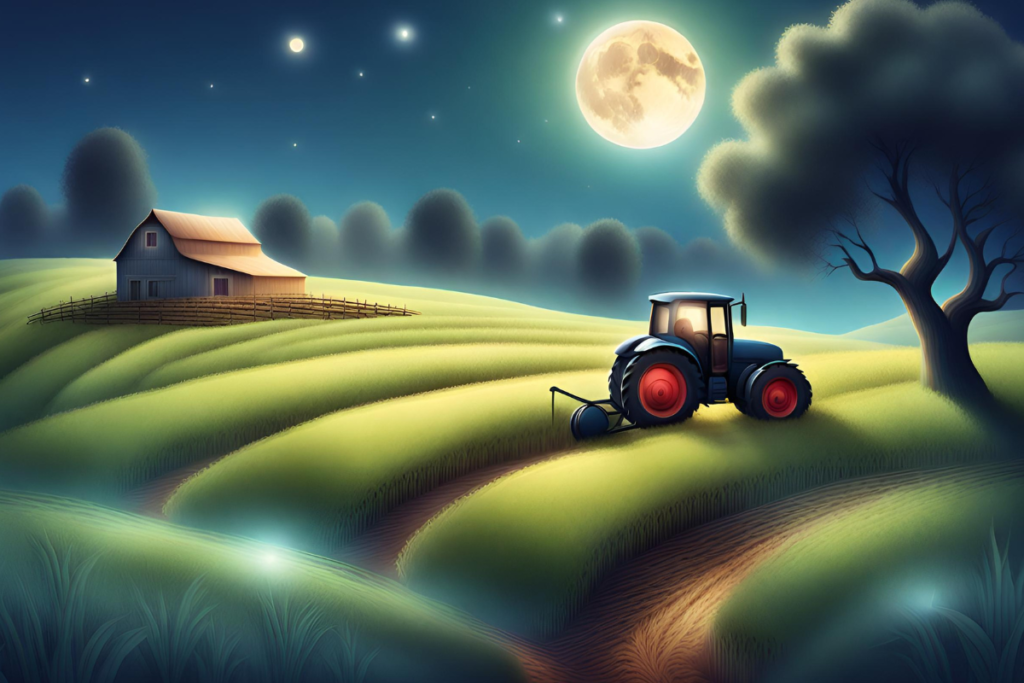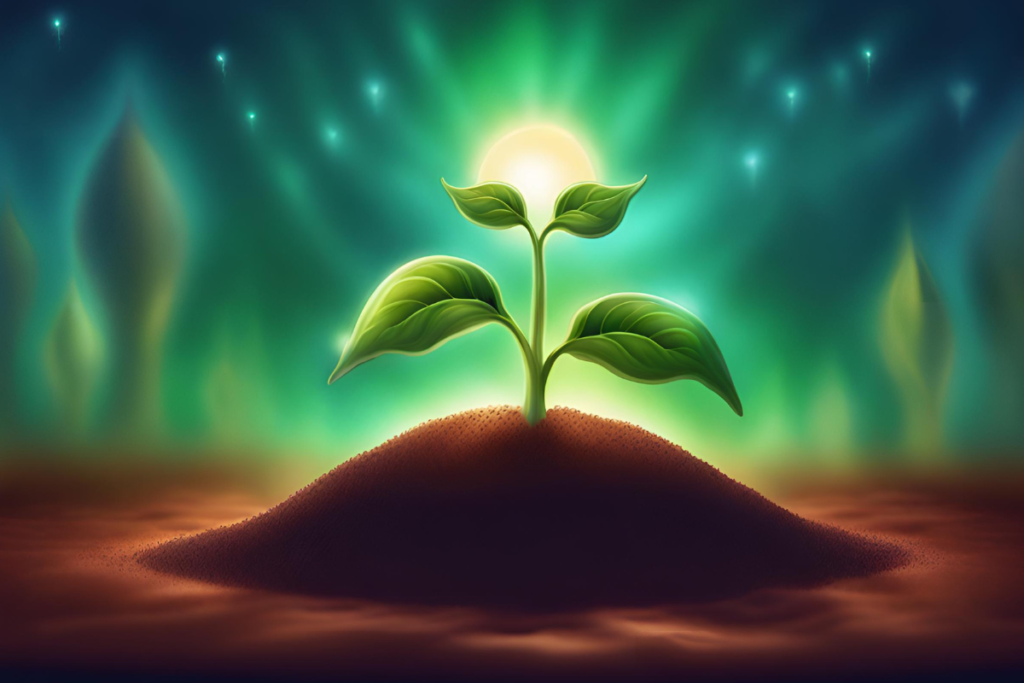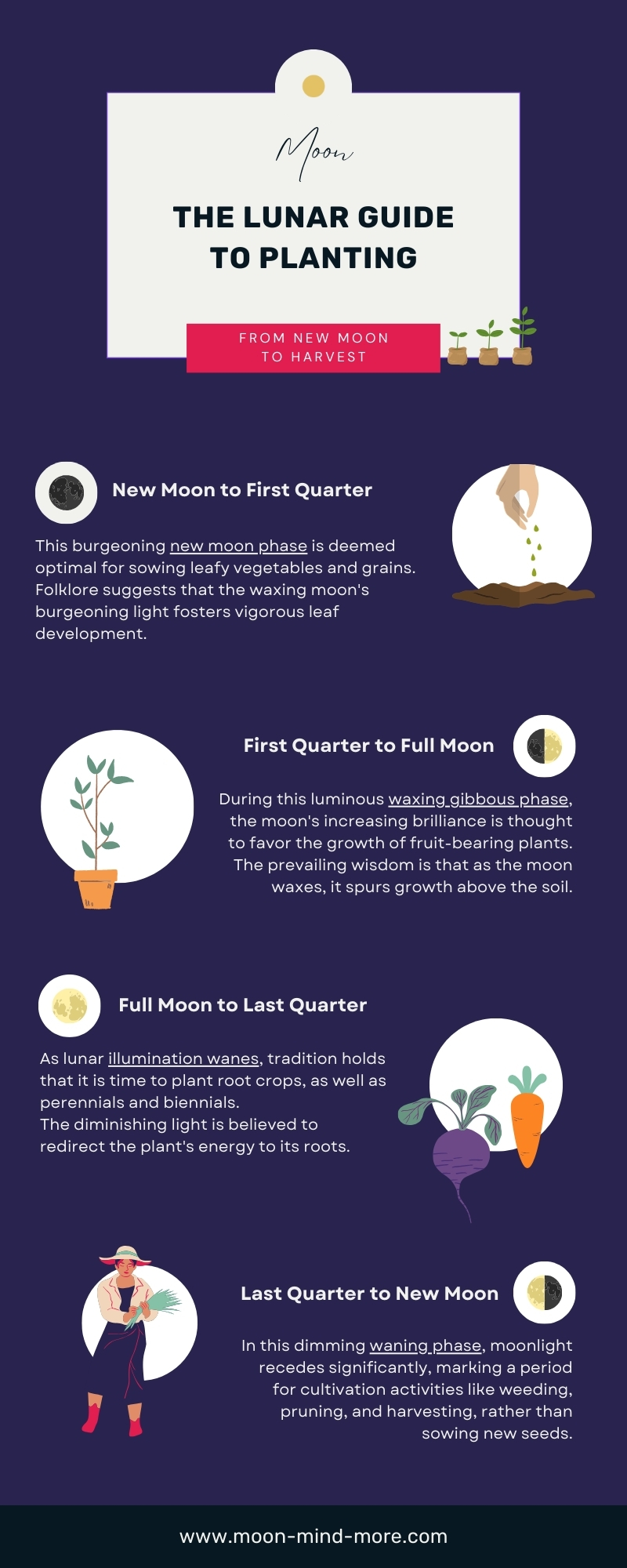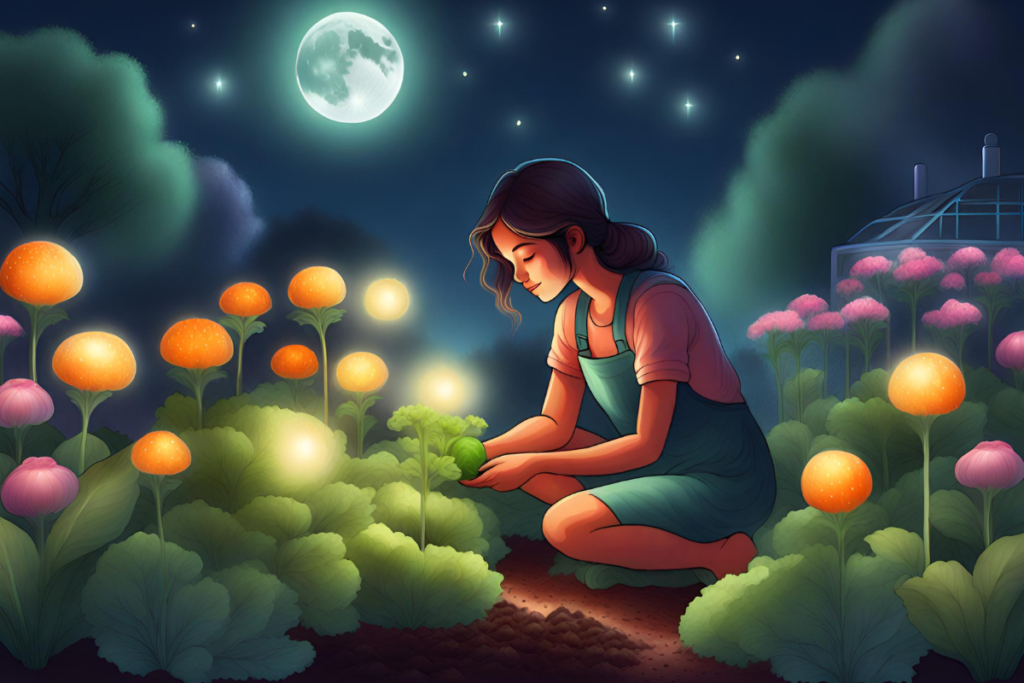For millennia, the moon has illuminated the night sky, serving as a celestial beacon for sailors and a silent partner to farmers.

The age-old practice of aligning agricultural activities with the lunar phases is deeply rooted in the annals of human history.
This article delves into the ancient practice of using moonlight in agriculture, examining its enduring legacy and potential applications in contemporary farming.
The Lunar Connection
Lunar farming is predicated on the belief that the moon’s gravitational influence extends beyond the ebb and flow of tides, reaching into the very soil that nurtures plant life.

This gravitational pull is thought to affect soil moisture levels, thereby impacting seed germination and plant growth. Adherents of the lunar calendar assert that sowing seeds in accordance with specific lunar phases can yield more abundant harvests.
Phases of the Moon and Planting Cycles

New Moon to First Quarter (Waxing Crescent)
This burgeoning new moon phase is deemed optimal for sowing leafy vegetables and grains. Folklore suggests that the waxing moon’s burgeoning light fosters vigorous leaf development.
First Quarter to Full Moon (Waxing Gibbous)
During this luminous waxing gibbous phase, the moon’s increasing brilliance is thought to favor the growth of fruit-bearing plants. The prevailing wisdom is that as the moon waxes, it spurs growth above the soil.
Full Moon to Last Quarter (Waning Gibbous)
As lunar illumination wanes, tradition holds that it is time to plant root crops, as well as perennials and biennials. The diminishing light is believed to redirect the plant’s energy to its roots.
Last Quarter to New Moon (Waning Crescent)
In this dimming waning phase, moonlight recedes significantly, marking a period for cultivation activities like weeding, pruning, and harvesting, rather than sowing new seeds.
Modern Applications and Scientific Scrutiny
Despite skepticism from the scientific community regarding certain claims of lunar farming, contemporary practitioners who incorporate these methods often report favorable outcomes.

Emerging research into plant circadian rhythms provides some scientific credence to the notion that light cycles, including lunar phases, may indeed influence plant behaviors.
The Moon’s Influence on Soil Fertility
The moon’s role in agriculture may extend beyond the timing of planting.
It is also thought to play a part in enhancing soil fertility. The waxing moon is believed to draw nutrients upward, aiding in topsoil enrichment, while the waning moon is associated with bolstering root development and nutrient uptake.
Cultural Perspectives and Lunar Lore

Cultures across the globe have their unique lunar lore, which often includes guidelines for farming by the moon. These traditions are not only agricultural practices but also part of a cultural heritage that honors the connection between the earth and the cosmos.
Integrating Lunar Farming with Modern Techniques
Today’s farmers who are interested in sustainable and organic practices are increasingly looking to integrate lunar farming principles with modern agricultural techniques.
This integration seeks to create a harmonious balance between respecting ancient wisdom and utilizing contemporary scientific understanding.
Conclusion
Moonlight in agriculture is a testament to humanity’s enduring quest to live in harmony with nature’s rhythms.
While not all aspects of lunar farming are substantiated by modern science, the tradition continues to thrive, offering a unique perspective on agricultural practices.
As we further investigate the interplay between celestial cycles and farming, the moon’s ancient guidance may yet illuminate new pathways for the future of agriculture, marrying tradition with innovation in the quest for sustainable farming.






